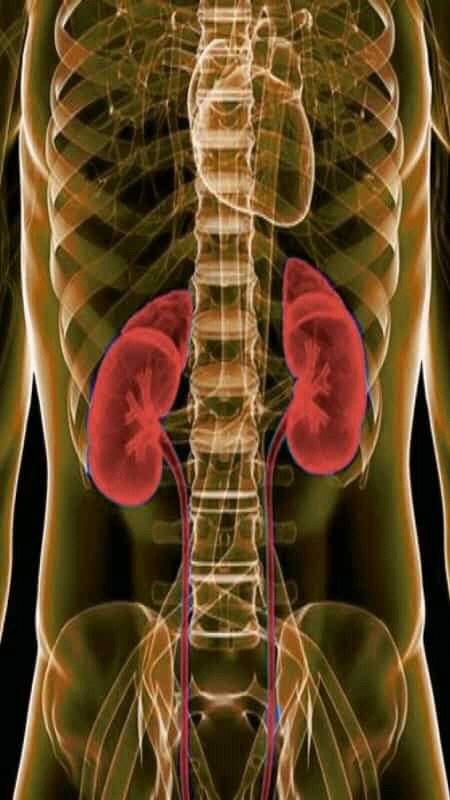The Circulatory System: The Lifeline of the Human Body
The circulatory system, often referred to as the cardiovascular system, is a complex network of blood vessels, the heart, and blood. It plays a vital role in sustaining life by delivering oxygen, nutrients, and hormones to cells throughout the body, while also removing waste products. In this article, we will explore the anatomy, function, and significance of the circulatory system in maintaining the health and well-being of the human body.
**Anatomy of the Circulatory System**
The circulatory system consists of three main components:
1. **The Heart:** The heart is a muscular organ located in the chest, slightly to the left. It acts as the central pump of the circulatory system, driving the flow of blood throughout the body. The heart is divided into four chambers: two atria (upper chambers) and two ventricles (lower chambers).
2. **Blood Vessels:** Blood vessels form a vast network throughout the body. They come in three primary types:
- **Arteries:** Arteries carry oxygenated blood away from the heart to various tissues and organs. The largest artery is the aorta, which branches into smaller arteries.
- **Veins:** Veins transport deoxygenated blood from the body's tissues and organs back to the heart. The largest vein is the vena cava, which carries blood from the body back into the right atrium of the heart.
- **Capillaries:** Capillaries are tiny, thin-walled vessels that connect arteries and veins. They are the sites of exchange for oxygen, nutrients, and waste products between the blood and the body's cells.
3. **Blood:** Blood is a specialized fluid that flows through the circulatory system. It consists of several components, including red blood cells, white blood cells, platelets, and plasma. Red blood cells transport oxygen, white blood cells help fight infections, platelets aid in blood clotting, and plasma is a liquid that carries nutrients and waste products.
**Function of the Circulatory System**
The primary function of the circulatory system is to transport blood throughout the body, ensuring that all cells receive oxygen, nutrients, and other essential substances while removing waste products. This complex network of vessels and the heart work together to accomplish several key functions:
1. **Oxygen Delivery:** The circulatory system transports oxygen from the lungs to cells throughout the body. Oxygen is vital for cellular respiration, where energy is produced.
2. **Nutrient Transport:** Nutrients, including glucose and other essential compounds, are carried by the blood and delivered to cells for energy and various metabolic processes.
3. **Hormone Distribution:** Hormones, chemical messengers produced by endocrine glands, are released into the bloodstream and transported to target organs or tissues to regulate various bodily functions.
4. **Waste Removal:** The circulatory system collects waste products generated by cellular metabolism, such as carbon dioxide and urea, and transports them to organs for elimination.
5. **Immune Response:** White blood cells in the circulatory system are essential for the body's defense against infections and foreign invaders.
6. **Temperature Regulation:** Blood circulation helps regulate body temperature by redistributing heat to maintain homeostasis.
**Circulation of Blood**
The circulation of blood within the circulatory system follows a specific path:
1. Deoxygenated blood from the body returns to the right atrium of the heart via the superior and inferior vena cava.
2. The right atrium contracts, pushing blood through the tricuspid valve into the right ventricle.
3. The right ventricle contracts, forcing blood through the pulmonary valve into the pulmonary artery.
4. The pulmonary artery carries deoxygenated blood to the lungs, where it picks up oxygen and releases carbon dioxide.
5. Oxygenated blood returns to the heart through the pulmonary veins and enters the left atrium.
6. The left atrium contracts, pushing blood through the bicuspid (mitral) valve into the left ventricle.
7. The left ventricle contracts, pumping oxygenated blood through the aortic valve into the aorta, the body's largest artery.
8. The aorta branches into smaller arteries that carry oxygenated blood to various tissues and organs.
9. Capillaries facilitate the exchange of oxygen, nutrients, and waste products between the blood and cells.
10. Deoxygenated blood is collected through veins and returns to the right atrium, restarting the cycle.
**Significance of the Circulatory System**
The circulatory system is essential for the overall health and survival of the human body. Here are some key aspects of its significance:
1. **Life-Sustaining:** The circulatory system is often called the "lifeblood" of the body because it delivers the oxygen and nutrients necessary for cellular functions and survival.
2. **Waste Removal:** It plays a crucial role in removing waste products generated by cellular metabolism, preventing the accumulation of toxic substances.
3. **Immune Response:** White blood cells in the circulatory system are integral to the body's immune response, defending against infections and diseases.
4. **Temperature Regulation:** The circulatory system helps maintain a stable body temperature, ensuring that cells can function optimally.
5. **Homeostasis:** By delivering essential substances and removing waste products, the circulatory system contributes to maintaining the body's internal balance (homeostasis).
6. **Healing and Recovery:** After injuries or surgeries, the circulatory system aids in transporting nutrients and immune cells to damaged tissues, facilitating healing and recovery.
**Common Circulatory Disorders**
Several disorders and conditions can affect the circulatory system, including:
1. **Hypertension:** High blood pressure can strain the heart and blood vessels, increasing the risk of heart disease, stroke, and other complications.
2. **Atherosclerosis:** A buildup of fatty deposits (plaques) in arteries can narrow and stiffen blood vessels, reducing blood flow.
3. **Heart Disease:** Conditions like coronary artery disease and heart failure can impair the heart's ability to pump blood effectively.
4. **Stroke:** A stroke occurs when blood flow to the brain is disrupted, often due to a blood clot or a ruptured blood vessel.
5. **Arrhythmia:** Irregular heart rhythms can lead to an abnormal heartbeat, which may require treatment or intervention.
6. **Peripheral Artery Disease:** This condition involves the narrowing of arteries outside the heart, often in the legs, reducing blood flow and causing pain.
**Maintaining a Healthy Circulatory System**
Several lifestyle choices and practices can contribute to a healthy circulatory system:
1. **Regular Exercise:** Physical activity promotes good circulation, strengthens the heart, and helps control blood pressure.
2. **Balanced Diet:** A diet rich in fruits, vegetables, lean proteins, and whole grains supports heart health.
3. **Maintain a Healthy Weight:** Being overweight or obese can increase the risk of circulatory disorders.
4. **Don't Smoke:** Smoking is a major risk factor for heart disease and circulatory problems.
5. **Limit Alcohol Consumption:** Excessive alcohol can contribute to high blood pressure and other health issues.
6. **Stress Management:** Chronic stress can affect the heart and circulatory system. Techniques such as meditation and relaxation exercises can help.
7. **Regular Check-ups:** Routine medical check-ups can detect early signs of circulatory disorders.
In conclusion, the circulatory system is the lifeline of the human


